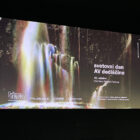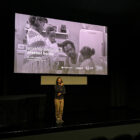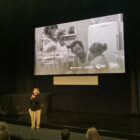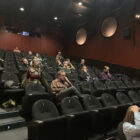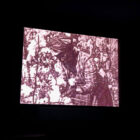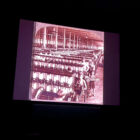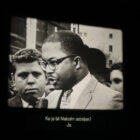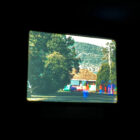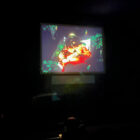DIVA Station, Slovenian Cinematheque: World Day for Audiovisual Heritage
Screening of experimental films from the Arsenal – Institute for Film and Video Art
Sunday, 26 October 2025, 6 pm and 8 pm
Slovenian Cinematheque, Miklošičeva 28, Ljubljana
Admission according to the Slovenian Cinematheque price list
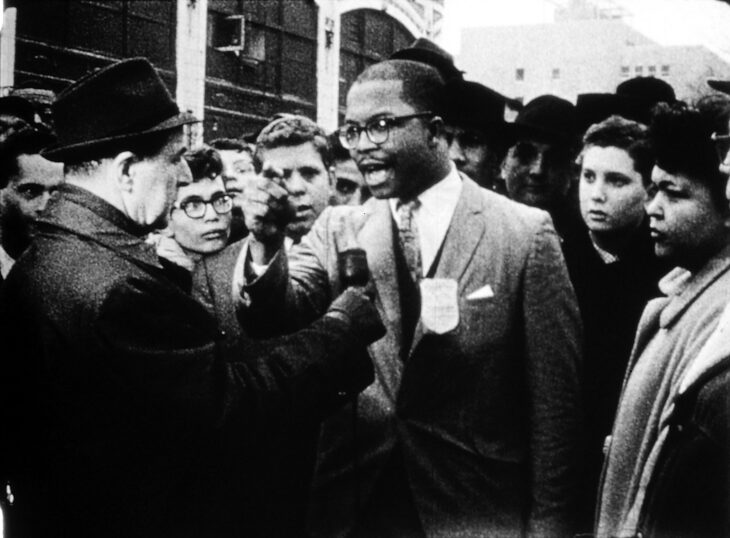
In 2005, UNESCO declared 27th October as World Audiovisual Heritage Day, which draws attention to the importance of preserving archival audio and audiovisual recordings, such as films, audio and video recordings, and radio and television programs. This heritage also includes the rich artistic production that is kept in Slovenia by DIVA Station (SCCA-Ljubljana) and related archives in other countries.
Every year we mark this day with an event as part of the Archiving Practices programme and we invite international archives, curators and artists as guests. Traditionally we organize the event in cooperation with the Slovenian Cinematheque.
This year, we invited the Arsenal – Institute for Film and Video Art from Berlin. The special programme for the World Day for Audiovisual Heritage entitled Like Lucid Dreams – key figures in international avant-garde cinema: Ken Jacobs and Corinne & Arthur Cantrill was curated and will be introduced by Angelika Ramlow, project manager for distribution and archives at Arsenal. Sadly Ken Jacobs passed away this October and we dedicate the programme in his memory.
Between 22nd and 25th October also welcome to visit additional screenings as part of the Archive on Location: Arsenal Berlin which is taking place at the Slovenian Cinematheque in collaboration with the Goethe-Institut Ljubljana.
Arsenal – Institute for Film and Video Art
A cinema, a festival (the Berlinale Forum and Forum Expanded), a distributor (arsenal distribution), and the archive form Arsenal’s areas of operation. The continual interaction between and intertwining of all these areas allows the institution to work with films in a lasting manner and from a range of different perspectives. This structure is at once a constitutive element of Arsenal and unique worldwide.
Since its foundation in 1963, Arsenal has engaged with the history of film and current developments within the medium in critical fashion, with contemporary discourses within society depicted, reflected upon, and contextualized along the way. Arsenal combines the expertise of many different people – filmmakers, artists, actors, curators and researchers – who realize interdisciplinary projects, festivals, and events. Arsenal takes on a pioneering role in developing forward-looking models for cinema, distribution, and archival work as well as in up-to-date approaches to reappraising and communicating film history before the backdrop of technical change and contemporary image and media culture.
Following over 60 years of cinema and festival work, Arsenal has a film collection encompassing 10,000 titles. It is the expression of the historical impulses linked to avant-garde and political cinema, but also provides insights into the diversity of contemporary film work. The concept of Living Archive describes an archival practice which sees the significance of an archive in relation both to the present and possible ideas for the future. Research into archival content and preserving, digitizing and restoring this content all form part of an artistic and curatorial practice that is grasped in participatory terms. The archive is an open space where research can be carried out. At the core of this work is critical reflection on the category of film heritage in relation to the history of political and aesthetic movements as well as to the history of colonialism and migration. This also includes challenging such terms as “world cinema” or “national cinematography”, which have also left their mark on the history of Arsenal. The idea of a transnational practice aimed at sharing content and structures is supported to this end.
Every two years, “Archival Assembly – Festival about international film archives” offers a new lens through which to view international film archives as living spaces to shape the future of cinema. The festival took place for the first time in September 2021 and gave a space to film archives and archive based projects for a public exchange. In 2023, Archival Assembly #2 focused on the concept of “Accidental Archivism” and in 2024 Archival Assembly #3 turned its focus to the importance of sound and language within the archival practices of international film history.
Arsenal is a member of FIAF (Fédération Internationale des Archives du Film / International Federation of Film Archives).
Like Lucid Dreams – key figures in international avant-garde cinema: Ken Jacobs and Corinne & Arthur Cantrill
To mark World Day for Audiovisual Heritage, which takes place every year on October 27, the Arsenal in Ljubljana is presenting two programs featuring films by key figures in international avant-garde cinema, Ken Jacobs and Corinne and Arthur Cantrill, predominantly in analog 16 mm format.
Since the 1950s, Ken Jacobs has been exploring the relationship between surface and depth in his films, often working with found footage, which he distorts in various ways to evoke a new perception of the images. Capitalism: Slavery (USA 2007) and Capitalism: Child Labor (USA 2006) are based on historical photographs that are animated with various effects and brought back to life. Perfect Film (USA 1986) and The Doctor’s Dream (USA 1978) show two diametrically opposed ways of using found footage material. ORCHARD STREET (USA 1955/2014) is the first film shot by Ken Jacobs, an observation of the Jewish-influenced Orchard Street in New York.
In their films, filmmakers Corinne Cantrill (1928–2025) and Arthur Cantrill (born 1938) explore the material properties of film as well as the visual and acoustic nature of the Australian landscape. At Eltham – a Metaphor on Death (Australia 1974) shows the view of a river in the interplay of day and night, light and dark, accompanied by the sounds of nature. Warrah (Australia 1980) was shot using the three-color technique on a coastline in New South Wales overgrown with sandstone and jungle. Notes on the Passage of Time (Australia, 1979) is also a study of the three-color technique and examines the same scene on Amethyst Avenue on a winter’s day and a summer’s day. Like a lucid dream, in Waterfall (Australia, 1984) the movements of the water merge into a metaphorical space of constant change that transcends reality and allows the viewer to experience the untamed power of the waterfall plunging into the depths. In Garden of Chromatic Disturbance (Australia 1998), the garden serves as the setting for a study of color: random objects are spread out in order to film them multiple times and develop them with varying light effects and color balance. In loving memory of Corinne Cantrill.
Angelika Ramlow
Sunday, 26 October 2025, 6 pm
PROGRAMME 1
Ken Jacobs – Hidden Layers behind the Images
Curator: Angelika Ramlow
One of the most extraordinary personalities in the history of moving images, native New Yorker Ken Jacobs demonstrates in his oeuvre his endless fascination and pursuit of exceptional, moving image art. For years now, Ken Jacobs has been exploring the relationship between surface and depth. Beginning with his early experiments with the Pulfrich effect via the dual projection “Nervous System” to the use of 3-D digital technology, his works don’t just fascinate due to their unsettling visual experiences but also due to the heightened sense of perception created in the process. Silent film, avant-garde, and digital 3D: in Ken Jacobs artistic practice one hundred and twenty years of film history can merge into one single cinematic event.
WARNING: Two films in the programme contain strong flashing light. We advise against viewing for people who are sensitive to sensory stimuli and people with epilepsy.
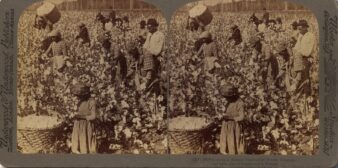
USA, 2007, digital format, b&w, 3′, no dialogue, with sound
An antique stereograph image of cotton-pickers, computer-animated to present the scene in an active depth even to single-eyed viewers.
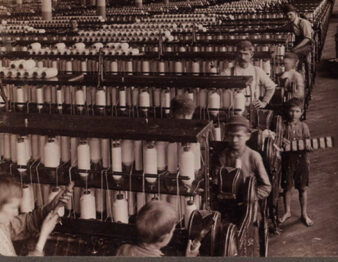
USA, 2006, digital format, b&w, 14′, no dialogue, with sound
A stereograph celebrating factory production of thread. Many bobbins of thread coil in a great sky-lit factory space, the many machines manned by a handful of people. Manned? Some are children. I activate the double-photograph to elicit a degree of 3D, composer Rick Reed suggests the relentless machine din. Your heart bleeding for the kids? The children will surely be rescued and by their bosses! “Boys”, they will say, “Have we got a war for you!”
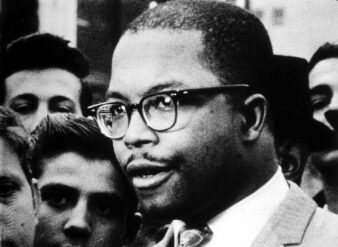
USA, 1986, 16 mm, b&w, 22′, English
Ken Jacobs on Perfect Film: “A film that was never made… unedited clump of out-takes of history. US TV newscast reportage of Malcolm X assassination. Presented for your delectation as lifted directly out of the garbage can.”
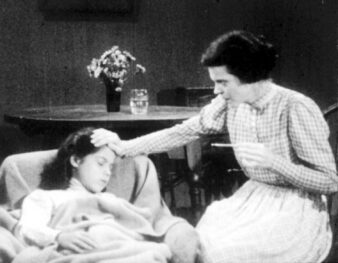
USA, 1978, 16 mm, b&w, 23′, English
The interplay of the two films Perfect Film and The Doctor’s Dream shows two diametrically opposed ways of using found footage material: reconstruction in Perfect Film and deconstruction in The Doctor’s Dream. While a historical event, the assassination of Malcolm X, is called to memory in Ken Jacob’s Perfect Film, The Doctor’s Dream uses ruptures and rearranges the film images from an old television film, bringing to the surface the latent sexual connotations inherent in the story. Broken up in this way, the story of an elderly doctor who is curing a sick young girl appears in a totally new light. What the two works share is that they return the forbidden and the rejected to visibility. In both films the appropriation and artistic processing of existing materials becomes a seismograph of the Zeitgeist depicted in them.
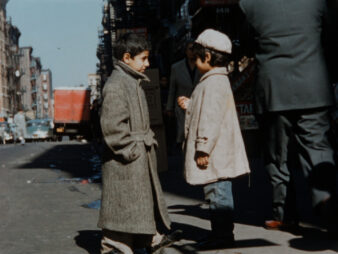
USA, 1955/2014, DCP (shot on 16 mm), colour, 27′, no dialogue
Orchard Street is Jacobs’ very first film, originally filmed in 1955. Shot in color with no sound, the project was filmed on location as an observation of the street, sidewalk, and inhabitants of what was primarily a Jewish area in the 1950s, just a decade after World War 2. In filming Orchard Street, Jacobs was not just documenting his own neighborhood, but what it represented beneath the surface. Orchard Street in 1955 is a place where an old woman in rags sells bread, signs advertise knishes, young girls jump rope, and a homemade sign commemorating the Dodgers hangs from a tenement fire escape. It is also a painful reminder of the horrors that many of these people had endured in Nazi-occupied Europe. The neighborhood was “a living history,” Jacobs explains. “That’s what I wanted to document. It was a place to painfully touch into this history.”
Sunday, 26 October 2025, 8 pm
PROGRAMME 2
Corinne and Arthur Cantrill – Touching the Earth
Curator: Angelika Ramlow
The filmmaker Corinne Cantrill (1928-2025), who died in February, and her husband Arthur (*1938) are central figures of experimental cinema. Their work explores the material properties of film as well as the visual and acoustic nature of the Australian landscape.
Their joint filmography comprises more than 150 works ranging from documentaries to experimental films, from multi-screen installations to performances. The main emphasis of their work has been and is on the filmic examination of themes such as landscape, color, light, and the history and technology of film.
Between 1971 and 2000, they also edited and published Cantrill Filmnotes, an international journal about experimental film, video and the applied arts. Their oeuvre explores artists, social movements and particularly Australia’s landscape. The partly structural approach of their films transcends itself by highlighting the sensory aspect of the cinematic experience and seeking ways of revealing this and making it palpable in their works.
The Cantrills’ keen interest in the relationship between landscape and the form of film soon led to a more profound conception of the Australian landscape as a part of Indigenous heritage and environment. The political dimension of the films illuminates their determined appreciation. “We are interested in a continuing dialogue between content and form. We also see this synthesis of landscape and film form as bringing together our attitudes as citizens to the conservation of land, forests and, seashore, and to Indigenous land rights. We have no difficulty in sharing the Indigenous belief that the landscape is the repository of the spiritual life of this continent.” (Arthur and Corinne Cantrill, 1982)
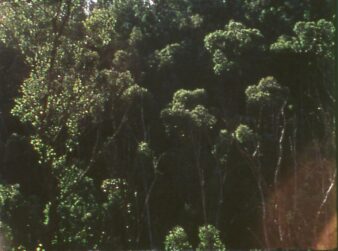
Australia, 1974, 16 mm, colour, 24′, no dialogue, with sound
The atmosphere in this experimental landscape film by Corinne Cantrill is restrained and dark. The shots of the landscape are layered; from time to time the river appears in the depth of the picture. Natural rhythms, in the alternation of day and night, are annulled. A lyrical space of light and shade opens up, accompanied by the song of bellbirds.
A central aspect of these landscape films (is the search for experimental forms of expression to record the passing of time and light and alternating colors of the spectrum and nuances of light.
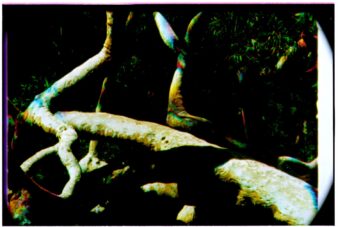
Australia, 1980, 16 mm, colour, 15′, no dialogue, with sound
In Warrah the Cantrills used three-color separation imagery to expand the experimental documentation of landscape. Alternating nuances of color conjure up; a formal beauty, which are echoed in birdsong and the buzzing of insects.
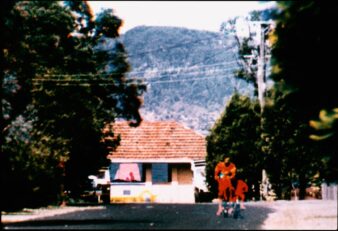
Australia, 1979, 16 mm, colour, 13′, silent
In Notes on the Passage of Time a study of three-color separation made in Pearl Beach, interlaces three time segments – the intervals of color separation, the change of seasons and the passing of a day. As the same scene is reproduced ephemerally, the mobile elements give rise to an impression of transience, while those that are immobile convey a sense of durability. The passing of time is thus made visible and palpable.
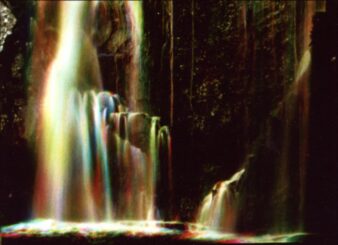
Australia, 1984, 16 mm, colour, 13′, no dialogue, with sound
Like a lucid dream, the movements of the water meld into a metaphorical space of constant transformation, which transcends the real and makes palpable the unbridled force of nature. It is one of the Cantrills’ most famous films and offers a unique viewing experience thanks to its brilliant interlacing of form, subject and apparatus.
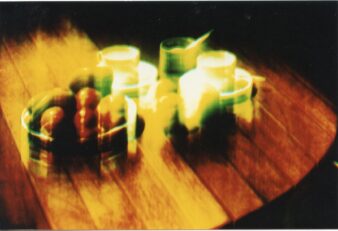
Australia, 1998, 16 mm, colour, 11′, no dialogue, with sound
Garden of Chromatic Disturbance is among the last of the three-color separation studies made by the Cantrills in which, mainly because of Arthur Cantrill’s experimental soundtrack of distorted sounds of nature, electronic carpets of sound and concrete music, any impression of a naturalist depiction is removed. At the same time, what has passed is evoked and what is actually invisible becomes the picture.
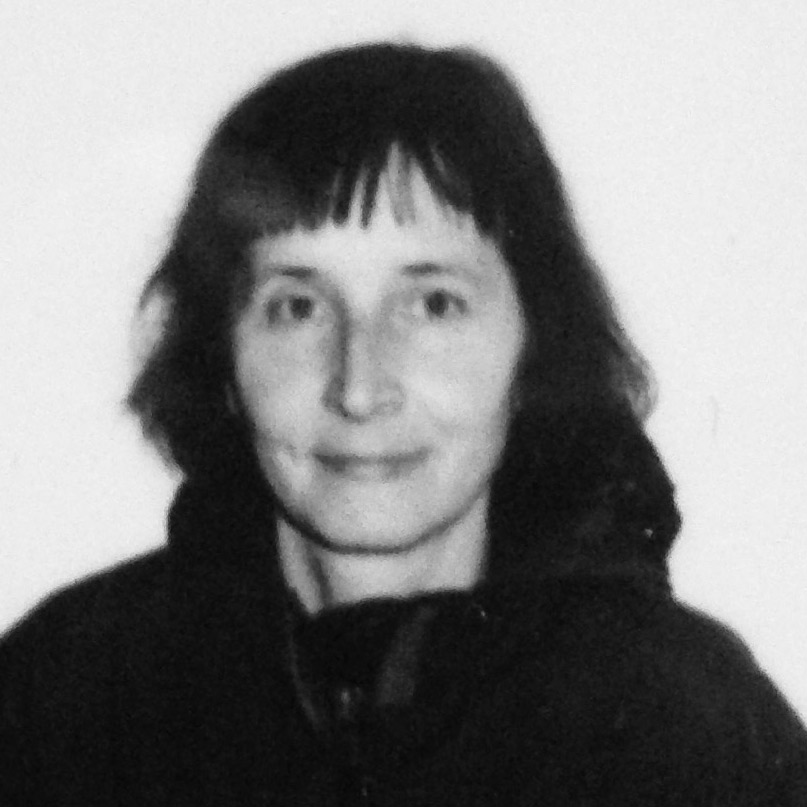 Angelika Ramlow studied theatre and film studies and literature at Free University of Berlin. She works at Arsenal – Institute for Film and Video Art since 2001. Since 2004 she is a project manager of Arsenal Distribution with a focus on experimental film, video art and installations. She is part of the Forum Expanded team and has coordonated curatorial programs and lectures at Film Festivals and cultural Institutions worldwide. She lives in Berlin and has two kids. (Photo: personal archive)
Angelika Ramlow studied theatre and film studies and literature at Free University of Berlin. She works at Arsenal – Institute for Film and Video Art since 2001. Since 2004 she is a project manager of Arsenal Distribution with a focus on experimental film, video art and installations. She is part of the Forum Expanded team and has coordonated curatorial programs and lectures at Film Festivals and cultural Institutions worldwide. She lives in Berlin and has two kids. (Photo: personal archive)
Photo: SCCA-Ljubljana archive, Angelika Ramlow
Production: SCCA-Ljubljana/DIVA Station
Partners: Slovenian Cinematheque, Arsenal – Institute for Film and Video Art, Goethe-Institut Ljubljana
Supported by: Ministry of Culture of the Republic of Slovenia and City of Ljubljana – Department for Culture
![]()
![]()
![]()
![]()
![]()
![]()
![]()

